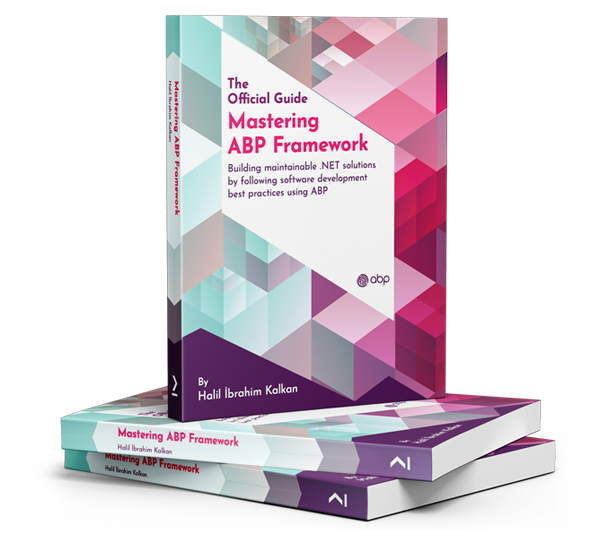Hello Sroman,
First of all, thank you very much for your valuable insights. They will be very useful in understanding and solving the problem. As I said, although it is not a priority, we will definitely look into this remote cluster connection problem. Thank you for your patience 🙏
Issue(for abp team): https://github.com/volosoft/abp-studio/issues/4142
Hello again,
Following up on the first point you mentioned earlier regarding the AuthServer exposing OIDC endpoints over HTTP instead of HTTPS:
“The authserver is exposing the OIDC endpoints with HTTP instead of HTTPS. This causes the Angular application to reject the endpoints, and no matter how many configurations I have tried to prevent it from validating or ignoring them, it continues to fail.”
We have made several adjustments in the templates and configuration to address this behavior and ensure that the Angular application can start and work correctly behind reverse proxies and Kubernetes environments.
If you apply the changes below (shown in the screenshots), the Angular application should work as expected.
Please note that MyProjectName is a placeholder and must be replaced with your own project name.
Font optimization is disabled in angular.json to avoid build-time issues in containerized environments:
browser):To correctly handle HTTPS termination at the reverse proxy level, the AuthServer configuration was updated:
This ensures that the AuthServer correctly respects the original HTTPS scheme when running behind NGINX or an ingress controller.
In the Angular Helm ConfigMap, requireHttps is set to false for internal cluster communication:
This prevents Angular from rejecting the OIDC endpoints when HTTPS is terminated upstream.
With these changes applied and after rebuilding/redeploying:
Please let us know if you continue to face issues after applying these changes.
Best regards, Berkan
The authserver is exposing the OIDC endpoints with HTTP instead of HTTPS. This causes the Angular application to reject the endpoints, and no matter how many configurations I have tried to prevent it from validating or ignoring them, it continues to fail.
I have created internal issues regarding this problem, and we will do our best to resolve them in the next Studio release. After solving the problem, I will provide you with a solution.
No matter how hard I try to connect to the services deployed in the cluster (Postgres, Redis, etc.) from my local computer connected to the cluster and with WireGuard, all attempts to connect to these services and endpoints time out. So when it comes to intercepting the request, the service cannot connect to either the database or Redis.
I will create a separate internal issue for this problem as well, but it may be low priority. It's difficult to say anything without reviewing it. I will update this after a detailed review.
I would like more information about the configuration, secrets, metadata, and other aspects of ABP Studio because the documentation is very scarce.
I will create a separate internal issue for this topic as well.
In addition, you have not updated the release notes for ABP Studio versions for a long time, which makes it difficult to know what improvements you have made in terms of application templates, configurations, and commands.
We will update it within today. Thank you for your understanding.
Thank you for reporting these issues. We appreciate you bringing them to our attention. We will start reviewing them on Monday and get back to you with updates as soon as possible.
We have resolved this issue and will release a new version soon. Until then, you can continue using the previous version to create a new service. Thank you for your understanding.
I have created an internal issue regarding this problem, which will be resolved in the next version.
When I checked the problem, I see that you can create a project with another developer account in the organization, but you cannot create one with the kingdom (kingdom@******), account, even though you have added it to your organization as a developer. Is that correct?
Hello, I am looking into your problem and will get back to you as soon as possible with the root cause.
Hi,
Thanks for the detailed explanation — it helps a lot.
We actually designed ABP Studio to support custom extensions, including fully custom templates. The idea was that anyone could build their own template extension and load it into ABP Studio UI or ABP Studio CLI, just like we load our own template package:
Volo.Abp.Studio.Extensions.StandardSolutionTemplates
This package is already an extension that ABP Studio loads through its extension system.
However, for now, due to some internal limitations, ABP Studio only allows loading our official StandardSolutionTemplates extension. Support for loading other custom extensions is planned, but not available yet.
So at the moment, there isn’t a clean or officially supported way to replace or override templates.
Workaround:
Until custom extensions are enabled, you can modify the template contents inside the NuGet package cache. Updating the TemplateContents folder inside the extension package should work as a temporary solution.
We definitely plan to allow full custom template extensions in the future, so this will become much easier later on.
Let me know if you need help with the workaround.
[holy-expertni-sluzby] said: Hello. I hope this is correct place where to send bugs with Studio. Since update to 1.4.0 (and also 1.4.1) I'm missing vertical scrollbar in Solution Runner (Applications). Thank you for returning it back.
This is a known problem, and it will be fixed next version. Thanks for your patience.

